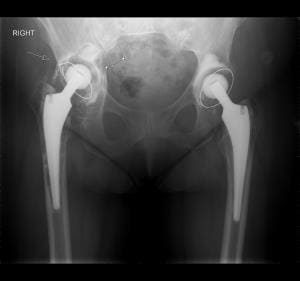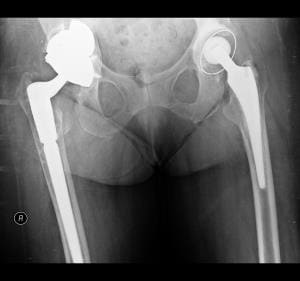One of the challenges in hip replacement is dealing with bone loss. This is usually the case in revision surgery where loosening of the implant leads to large cavities or holes in the bone. This leads to a weak foundation to put in another implant solidly. In the hip socket, there are a number of ways to solve this issue using a combination of bone cement, bone graft or larger implants with added metal constructs.
In the case of the femur (thigh bone), we use longer, bigger implants that cover a much larger surface area of the bone to integrate.

Image showing a loose total hip replacement on the right side. The arrows are pointing to loosening of the implant with massive bone loss.

The new implant has been put in, and large bits of metal substituted for the bone loss; this x-ray is one year after the procedure.